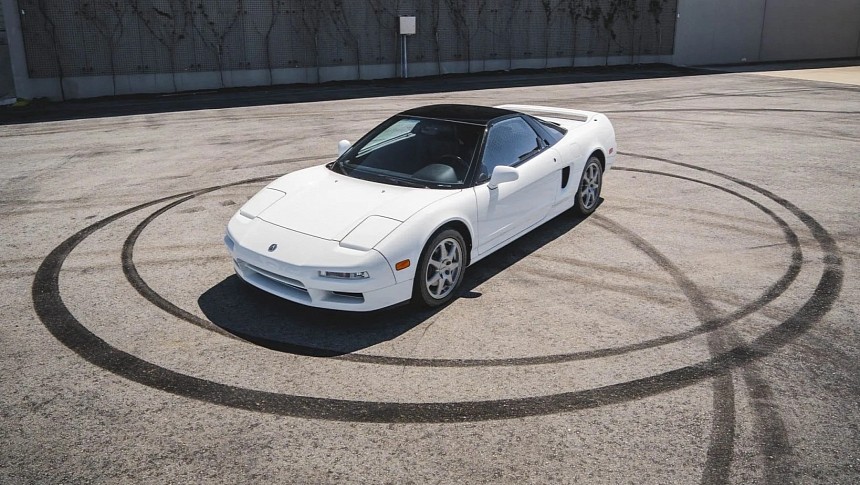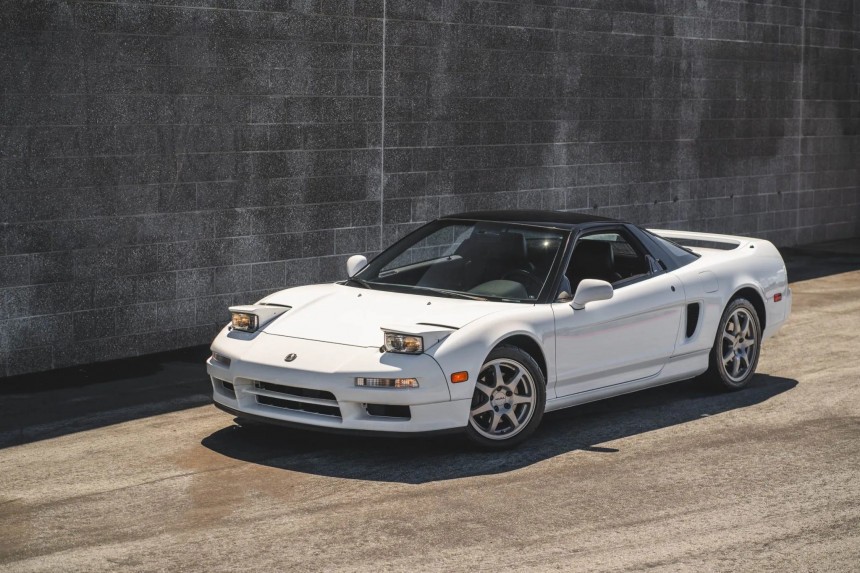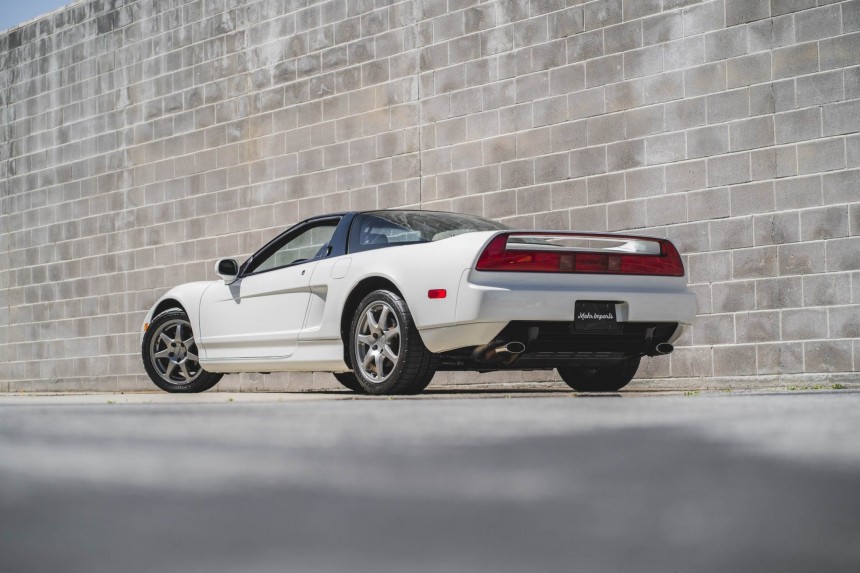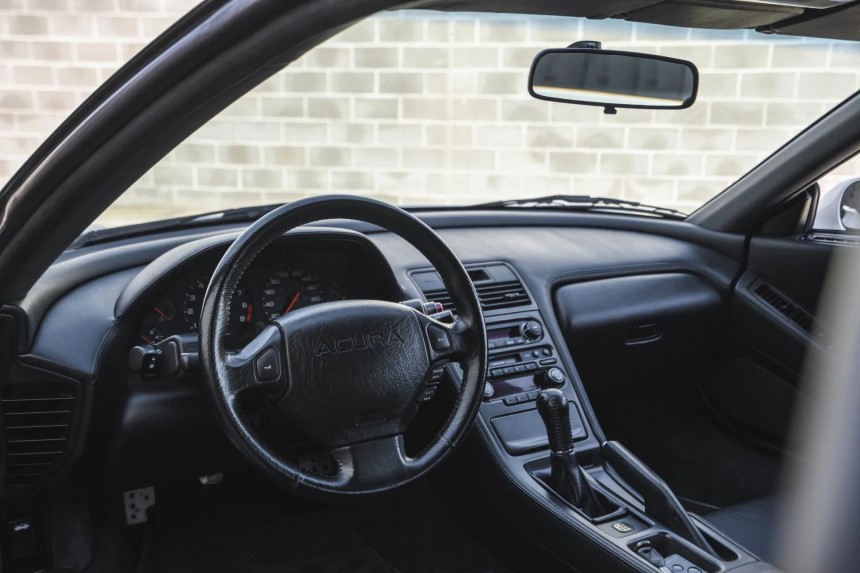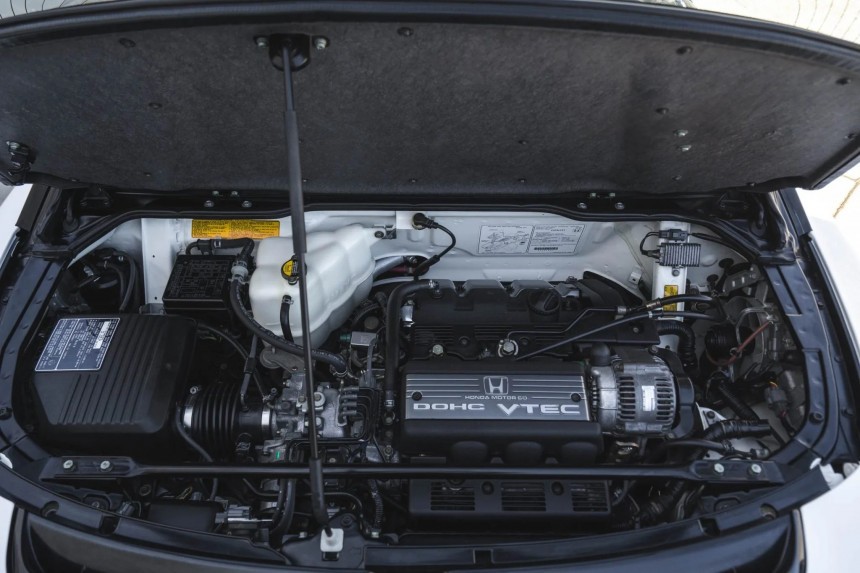Whenever I talk about Japanese cars, I can’t help but feel like I loathe them a little. The community around them got so toxic that people sometimes steer away from these cars just because of everything associated with them. But, to once more, light the fire in our hearts when it comes to Japanese cars, let me show you this Acura NSX.
Before getting into the knucks and crannies of this car and its history, I should start by saying that, at least for some people, the NSX could fall under that overpriced category. I tend to disagree, but my opinion could be saturated given the JDM landscape of today. But, we are here to bask in the greatness of this car, not determine whether or not it is overhyped.
Back in the ‘80s, sports cars were pretty dull. While it is true that the likes of Ferrari were making some pretty good V8-powered cars, they came with a hefty price tag. Seeing that, Honda founder, Soichiro Honda, did the most non-Honda thing ever - he called up the Italian design house Pininfarina and proposed the idea of building a mid-engined, rear-wheel drive supercar.
What this new Italian-Japanese collaboration came up with was the most ‘80s design I have ever seen - the HPX prototype. The HPX wasn't your regular display car because it had a fully working engine and a really cool one at that. It was a 2.0-liter (122 ci) V6 from Honda’s Formula 2 team.
While all of this HPX stuff was going on, Honda got back into F1 racing. That fueled the go-fast fire in the hearts of every engineer working there. So, they started playing around with mid-engined test mules made from a Honda City and a CRX. They were also about to launch the luxury brand Acura in the U.S., and a halo car for the brand was a pretty damn good idea.
The company was excited at the prospect of building a road car with F1 tech. But, it also needed to be comfortable and usable daily, in true Honda fashion. With the Ferrari 328 set as a benchmark and using the HPX as inspiration, a new project was born, with the code name NSX - New Sportscar eXperimental.
The NSX debuted at the 1989 Chicago Auto Show, but it wasn’t ready for production quite yet. It would take another two years until the cars started to hit the road, but it was more than worth the wait. To specifically understand why the NSX is so good, we have an example from 1992 to dive deep into.
This particular NSX is finished in Grand Prix White with a black roof and pillars. While the paint looks good, it isn’t the highlight of the body. The highlight is that it’s made entirely from aluminum, which was no easy feat at that time. Honda chose to go the aluminum route because a steel body combined with all of the comfort amenities would make for a pretty heavy car.
The aluminum body houses a few cool features, like an integrated wing, side air intakes, dual exhaust, and the all-mighty pop-up headlights. The outside is complemented by a set of 16-inch aluminum wheels in the front and 17s in the back.
Behind said wheels hides a double-wishbone suspension setup on all four corners with the addition of stabilizer bars both front and rear. Staying on the topic of things hidden by the wheels, braking is handled by four-wheel disc brakes with NSX-branded calipers over vented rotors.
Now, it’s time we move on to the interior. As I said, driveability was one of the major points of the NSX. Now, I was lucky enough to sit in a few sports cars, but no supercar yet, and I can assure you that you have better visibility wearing sunglasses at night than in the cabin of a sports car. To solve this problem, Honda took inspiration from an F16 fighter jet for the greenhouse, giving the NSX great 360 visibility.
For your comfort amenities, the cabin features power-adjustable sports seats upholstered in black leather, automatic climate control, cruise control, and a Bose sound system. The steering wheel has a three-spoke design and it is also finished in black leather. Behind it, you’ll find a 180 mph (290 kph) speedo and a tachometer with an 8,000 rpm redline.
So, what gives the NSX that super-high redline? It is a 3.0-liter (183 ci) V6. But this is no ordinary V6. At first, the NSX should have been powered by the aforementioned 2.0-liter unit, but it was ditched in favor of the bigger power plant. This V6 has the all-mighty VTEC technology and an all-aluminum design, and it was revolutionary, to say the least. It was the first production car to feature titanium connecting rods and the pistons were forged. All of that adds up to 270 hp (274 ps) and a glorious soundtrack. Power is sent to the rear wheels via a five-speed manual transmission and a limited slip differential.
This final design got approved by the one and only Ayrton Senna, after he criticized it at first for feeling too fragile. With this major boost given by Senna, the NSX turned into a handling beast, being praised by journalists everywhere and even called the ‘best sports car ever made’.
Nowadays, if you want to experience the nostalgic dream that is the NSX, you have to dig pretty deep, as prices are reaching close to six figures. But, if you have that kind of money, this 1992 NSX is up at auction in Monterey, California. It currently sits at 65,000 dollars with 44,000 miles (71,000 km) on the clock. It comes with memorabilia, full-service records, a clean Carfax, and a clean California title.
The NSX is up there with the greatest Japanese cars ever made, and in a world of overhyped GTRs and Supra’s, choose to be the NSX.
Back in the ‘80s, sports cars were pretty dull. While it is true that the likes of Ferrari were making some pretty good V8-powered cars, they came with a hefty price tag. Seeing that, Honda founder, Soichiro Honda, did the most non-Honda thing ever - he called up the Italian design house Pininfarina and proposed the idea of building a mid-engined, rear-wheel drive supercar.
What this new Italian-Japanese collaboration came up with was the most ‘80s design I have ever seen - the HPX prototype. The HPX wasn't your regular display car because it had a fully working engine and a really cool one at that. It was a 2.0-liter (122 ci) V6 from Honda’s Formula 2 team.
The company was excited at the prospect of building a road car with F1 tech. But, it also needed to be comfortable and usable daily, in true Honda fashion. With the Ferrari 328 set as a benchmark and using the HPX as inspiration, a new project was born, with the code name NSX - New Sportscar eXperimental.
The NSX debuted at the 1989 Chicago Auto Show, but it wasn’t ready for production quite yet. It would take another two years until the cars started to hit the road, but it was more than worth the wait. To specifically understand why the NSX is so good, we have an example from 1992 to dive deep into.
The aluminum body houses a few cool features, like an integrated wing, side air intakes, dual exhaust, and the all-mighty pop-up headlights. The outside is complemented by a set of 16-inch aluminum wheels in the front and 17s in the back.
Behind said wheels hides a double-wishbone suspension setup on all four corners with the addition of stabilizer bars both front and rear. Staying on the topic of things hidden by the wheels, braking is handled by four-wheel disc brakes with NSX-branded calipers over vented rotors.
For your comfort amenities, the cabin features power-adjustable sports seats upholstered in black leather, automatic climate control, cruise control, and a Bose sound system. The steering wheel has a three-spoke design and it is also finished in black leather. Behind it, you’ll find a 180 mph (290 kph) speedo and a tachometer with an 8,000 rpm redline.
So, what gives the NSX that super-high redline? It is a 3.0-liter (183 ci) V6. But this is no ordinary V6. At first, the NSX should have been powered by the aforementioned 2.0-liter unit, but it was ditched in favor of the bigger power plant. This V6 has the all-mighty VTEC technology and an all-aluminum design, and it was revolutionary, to say the least. It was the first production car to feature titanium connecting rods and the pistons were forged. All of that adds up to 270 hp (274 ps) and a glorious soundtrack. Power is sent to the rear wheels via a five-speed manual transmission and a limited slip differential.
Nowadays, if you want to experience the nostalgic dream that is the NSX, you have to dig pretty deep, as prices are reaching close to six figures. But, if you have that kind of money, this 1992 NSX is up at auction in Monterey, California. It currently sits at 65,000 dollars with 44,000 miles (71,000 km) on the clock. It comes with memorabilia, full-service records, a clean Carfax, and a clean California title.
The NSX is up there with the greatest Japanese cars ever made, and in a world of overhyped GTRs and Supra’s, choose to be the NSX.
